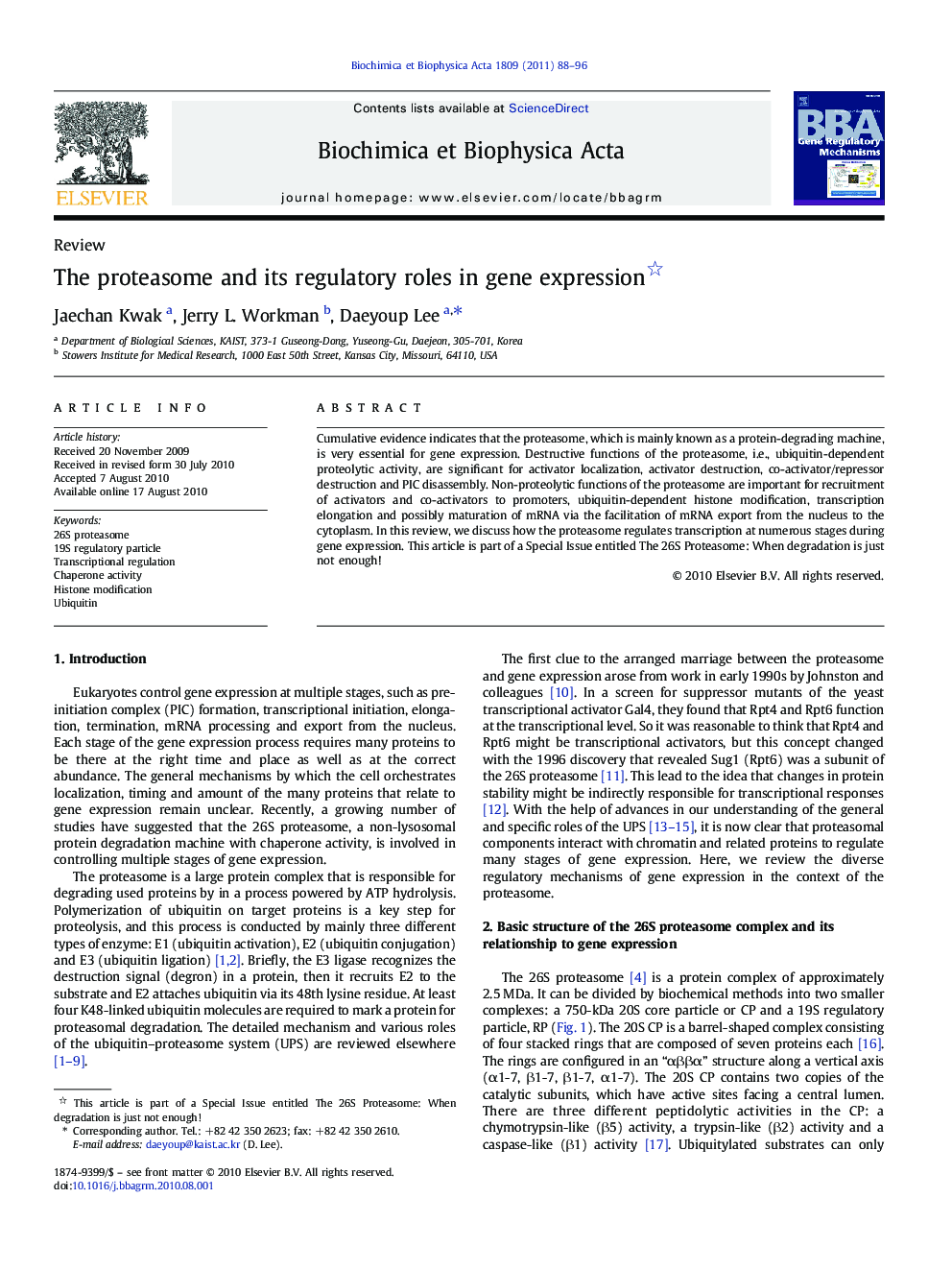| Article ID | Journal | Published Year | Pages | File Type |
|---|---|---|---|---|
| 1946684 | Biochimica et Biophysica Acta (BBA) - Gene Regulatory Mechanisms | 2011 | 9 Pages |
Cumulative evidence indicates that the proteasome, which is mainly known as a protein-degrading machine, is very essential for gene expression. Destructive functions of the proteasome, i.e., ubiquitin-dependent proteolytic activity, are significant for activator localization, activator destruction, co-activator/repressor destruction and PIC disassembly. Non-proteolytic functions of the proteasome are important for recruitment of activators and co-activators to promoters, ubiquitin-dependent histone modification, transcription elongation and possibly maturation of mRNA via the facilitation of mRNA export from the nucleus to the cytoplasm. In this review, we discuss how the proteasome regulates transcription at numerous stages during gene expression. This article is part of a Special Issue entitled The 26S Proteasome: When degradation is just not enough!
Research Highlights▸Basic structure of the 26S proteasome complex and its relationship to gene expression. ▸The proteolytic roles played by the 26S proteasome in transcription. ▸Non-proteolytic roles played by the proteasome in transcription.
